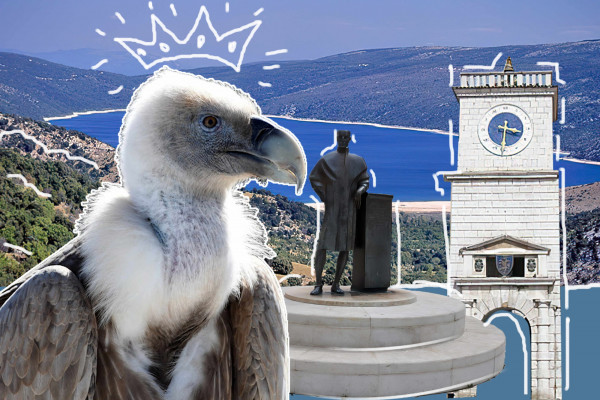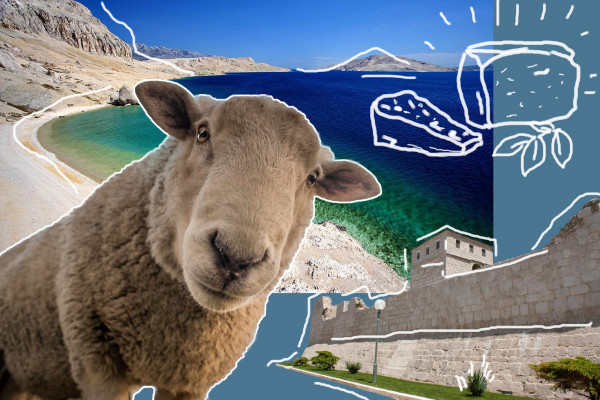Show all photos
TOP 10 Historic Places of Istria for visit
The Istrian peninsula has been inhabited since the Bronze Age and throughout its history has been an attraction for various peoples, both Slavic and Roman, which has given its cities a unique cultural character. You can admire ancient buildings as well as medieval palaces, churches and villas, which were built during the Venetian Republic. After the fall of the Venetian Republic, at the end of the 18th century Istria came under the rule of Austria, then France, and then modern Italy until it became part of today's Croatia. All this multicultural history has created an extraordinary architectural image of the region, in which the best European architectural styles from different eras are mixed. Take a journey through time by visiting each of the following places:
1. The Colosseum in Pula - the best-preserved amphitheatre in the world, a remnant of the Roman Empire.
2. The Verudela Fortress - the largest Austro-Hungarian fortress of the 19th century tells the story of how the Austro-Hungarian Empire tried to transform Pula and its surroundings into a major seaport.
3. The Church of St. Mary on Shkriljinah (Beram) - the Gothic church with its 15th-century frescoes will take you on a journey through the life and death of a medieval man. The most famous series of frescoes "Dance of Dead" is located here.
4. The Euphrasian Basilica in Porech - one of the most significant early Christian complexes in the world, a UNESCO World Heritage Site with an impressive mosaic of saints.
5. Dvigrad - the ruins of an old town built in the 15th century by a pirate who had planned to hide there from the English fleet.
6. Hum Castle - an 11th-century castle in the smallest city in the world where Cyril and Methodius created the Slavic alphabet.
7. Glagolitic Alley - a 6 km road with sculptures in honor of the oldest Slavic alphabet - Glagolitic.
8. The Pazin Abyss - protected landscape above which the castle is built. According to the famous novel The Count of Monte-Christo, the main character managed to escape from the prison of the castle, overcoming the Pazin Abyss, but in reality no prisoner managed to do it.
9. Castle Morosini Grimani in Svetvinchenat - a 15th-century castle that survived to this day. Impressive medieval square for knights' tournaments and preserved town architecture will plunge you into the spirit of the late Middle Ages, the time of knights and beautiful ladies.
10. The Twin Gates of Motovun - The twin gates to the medieval city, with their antique inscriptions and elements of the 16th century, are a well-preserved symbol of security and strength in the Middle Ages.
Each of these places is a starting point for the next journeys through the centuries-old history of Istria.
Itinerary
TOP 1: Historic Places in Istria
The Colosseum in Pula
TOP 1: Historic Places in Istria
The Colosseum in Pula
The best-preserved amphitheatre in the world, a remnant of the Roman Empire
TOP 2: Historic Places in Istria
The Verudela Fortress
TOP 2: Historic Places in Istria
The Verudela Fortress
The largest Austro-Hungarian fortress of the 19th century tells the story of how the Austro-Hungarian Empire tried to transform Pula and its surroundings into a major seaport.
TOP 4: Historic Places in Istria
The Euphrasian Basilica in Porech
TOP 4: Historic Places in Istria
The Euphrasian Basilica in Porech
One of the most significant early Christian complexes in the world, a UNESCO World Heritage Site with an impressive mosaic of saints.
TOP 5: Historic Places in Istria
Ruins of Dvigrad
TOP 5: Historic Places in Istria
Ruins of Dvigrad
The ruins of an old town built in the 15th century by a pirate who had planned to hide there from the English fleet.
TOP 6: Historic Places in Istria
Hum Castle
TOP 6: Historic Places in Istria
Hum Castle
An 11th-century castle in the smallest city in the world where Cyril and Methodius created the Slavic alphabet.
TOP 7: Historic Places in Istria
Glagolitic Alley
TOP 7: Historic Places in Istria
Glagolitic Alley
A 6 km road with sculptures in honor of the oldest Slavic alphabet - Glagolitic.
TOP 8: Historic Places in Istria
The Pazin Abyss
TOP 8: Historic Places in Istria
The Pazin Abyss
protected landscape above which the castle is built. According to the famous novel The Count of Monte-Christo, the main character managed to escape from the prison of the castle, overcoming the Pazin Abyss, but in reality no prisoner managed to do it.
TOP 9: Historic Places in Istria
Castle Morosini Grimani in Svetvinchenat
TOP 9: Historic Places in Istria
Castle Morosini Grimani in Svetvinchenat
A 15th-century castle that survived to this day. Impressive medieval square for knights' tournaments and preserved town architecture will plunge you into the spirit of the late Middle Ages, the time of knights and beautiful ladies.
TOP 10: Historic Places in Istria
The Twin Gates of Motovun
TOP 10: Historic Places in Istria
The Twin Gates of Motovun
The twin gates to the medieval city, with their antique inscriptions and elements of the 16th century, are a well-preserved symbol of security and strength in the Middle Ages.
Guide Location
Reviews
4.6/5
Excellent
Based on
26 reviews
Excellent
15
Very Good
11
Average
0
Poor
0
Terrible
0
Albert
15/10/2021
Wonderful guide for the journey and we had the chance of visiting 4 locations out of 10 locations. I enjoyed the trip at Dvigrad where ruins of the old town were built and had unforgettable experience at Hum Castle in Istria where we were told of the Slavic alphabet created by Methodius.
Felix
15/10/2021
The Fortress and the Hum castle in Istria were my top places to visit once i checked the guide and i loved both places. Thanks to the accurate guides
Thomas
13/10/2021
The guide gave a descriptive explanation of how the ruins were deserted after a plague hit it. Touring the ruins of this location was an educative experience for me. Thanks to my guide.
Cyprian
12/10/2021
The guide was significant for us in locating various places. We visited Dvigrad where ruins of the old town were built. It is the point where a pirate planned to hide against the the English fleet.
Alma
11/10/2021
Exciting experience it was, the amphitheatre was spacious to accomodate me and my film students and the films shown here were thrilling. We visited 7 of the 10 places suggested in the guide and we grabbed some helpful information. Impressive tour at Twin Gates of Motovun, worth a visit and ended our tour at the Pazin Abyss.
Jessica
11/10/2021
Interesting guide through the historic locations and we loved the experience at The Colosseum in Pula and mostly at Hum Castle . We toured 5 out of the 20 location in the guide.
Lavender
18/09/2021
I loved this site. The guides were very clear. We were able to reach here without any problems.
Showing 15 - 21 of 26 total













